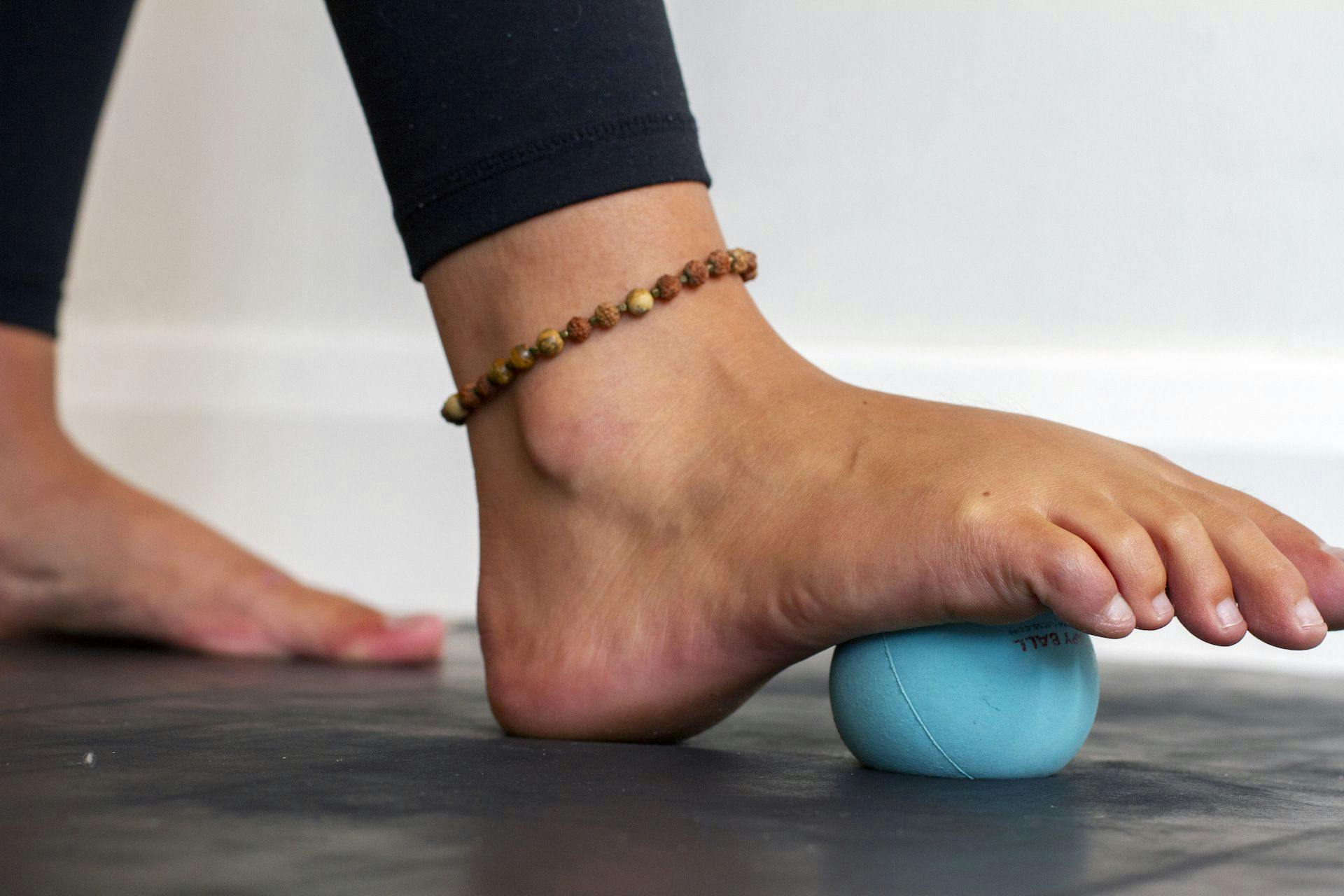08 November, 2020
How massaging your feet can release your entire body
Our feet, which bear the weight of the whole body, allow for locomotion and undergo a lot of unconscious work. Still, they tend to be the least pampered area of the body! To better care for your feet and keep them strong and flexible, a daily foot massage is a fantastic option – and you can do this yourself with the right tools.

Our feet, which bear the weight of the whole body, allow for locomotion and undergo a lot of unconscious work. Still, they tend to be the least pampered area of the body! To better care for your feet and keep them strong and flexible, a daily foot massage is a fantastic option – and you can do this yourself with the right tools.
Self-massage relieves aches and pains, enhances breathing, reduces stress and improves your posture and performance. To understand how it works, you must first understand that the body is made up of multiple layers of connective tissue (fascia) that weaves and winds its way around every part of your body’s parts, connecting (and separating) you from head to toe.
“A fascia is a sheath, a sheet, or any other dissectible aggregations of connective tissue that forms beneath the skin to attach, enclose, and separate muscles and other internal organs.”
Feet have 42 muscles, 26 bones, 33 joints, 250,000 sweat glands and at least 50 ligaments and tendons—plus almost 15,000 nerve endings! Fascia, or connective tissue, also runs through the back line of your body (otherwise known as the superficial back line) and connects like a stirrup under your feet. The most general statement that can be made about any of the fascial lines in the body is that strain, tension (good and bad), trauma, and movement tend to be transmitted through them.
In short, the body is hugely interconnected. Although you may be feeling tension, pain or discomfort in one area of the body, doesn't mean that one zone of tension is the 'problem area' or is the root of the issue.
With both physiological and physical benefits, here’s a few reasons why you should invest in rolling out your feet.
Improves blood circulation
Due to a sedentary lifestyle, many people don’t use their feet muscles properly, impeding good blood flow. Also, tight, pointed shoes–especially high heels–hinder circulation. Ten minutes of foot massage daily helps in transporting oxygen to the body’s cells, which is essential for overall health.
Helps aid relaxation
After a tiring and stressful day, a foot massage is a soothing and relaxing way to relax, particularly after a long day of standing and walking around, as the feet tend to swell up. Massaging your feet for 5 to 10 minutes before going to bed can improve feelings of general well-being – aiding a peaceful sleep.
Relieves body pain outside of the feet themselves
As noted, connective tissue runs through our entire body, right through to feet. The plantar surface of the foot is often a source of trouble that communicates up through the rest of the line. Limitation here often correlates with tight hamstrings, lumbar lordosis, and hyperextension in the upper back/neck.
Massaging and releasing connective tissue in the feet can release and relax the whole back line of your body.
A simple test: begin by taking a simple fold forward, or uttanasana in yoga. Notice how the back line of your body is feeling – from your hamstrings, low back to the back of your neck. Start massaging your feet for a few minutes on each foot with a tennis ball or mysofascial release ball, and then repeat your fold forward. Notice then how your body has shifted since the self massage. Everything is connected!
Makes feet healthier
Massaging helps to stimulate the muscles around your feet, lessens stiffness and even reduces pain in the ankles or the heels. Plus, a short 5-minute foot massage daily will make your ankles strong and flexible, thus preventing unpleasant ankle and foot injuries.
Reminder: It doesn't have to hurt to work
When working with your body’s tissues, keep in mind the mantra “It doesn’t have to hurt to work.” Our tissues are soft and often under a tremendous amount of tension. Going ‘all out’ to achieve relaxation can leave you sore and bruised the following day, exactly the opposite of what you’re trying to achieve.
Research shows that our tissues respond better to a softer tool that gently entices your muscles into relaxation. Harder tools tend to switch on the flight or fight response resulting in muscle bracing (contracting) to protect themselves against a threat. So find your edge, and never lose touch with your breath!
Happy rolling!